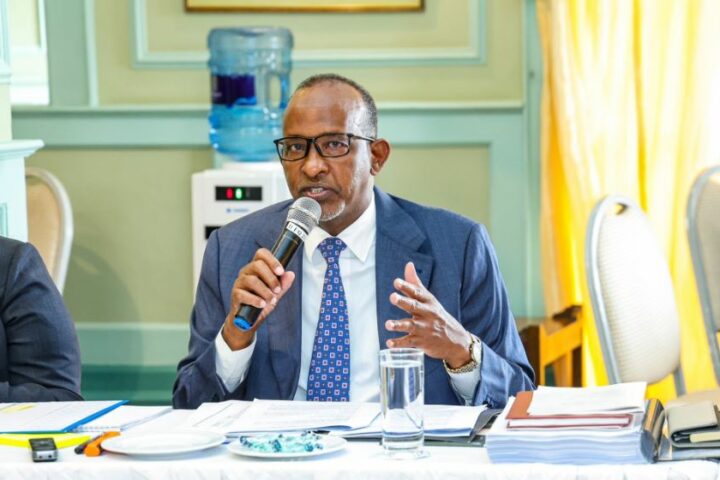 Farmers are interested in digital solutions that enable them to effectively and quickly reduce their costs and find and expand their markets.
Farmers are interested in digital solutions that enable them to effectively and quickly reduce their costs and find and expand their markets.
These include technologies related to high-speed Internet access, crop monitoring systems, field sensors, automated farm machinery, etc.
Although it should be understood that investment in new technologies, including digital, sometimes cannot be afforded by all because of their high cost, high risks and lack of qualified personnel.
Digital technologies are mostly affordable to large businesses, because they are quite expensive, although they theoretically pay off quickly.
For the small and medium-sized agribusiness segment, the costs are high, and the payback period is not always clear. In addition, not every farm can afford a retraining program for employees or hire specialists with the necessary qualifications.
Also, not all rural areas have the necessary infrastructure for digital technology.
However, even with the challenges, large and medium-sized businesses are making efforts for digital transformation, because in today’s environment, digitalization and artificial intelligence help solve the challenges of production, processing, marketing preferences, and product delivery.
Luckily, the governments of different countries see the need for farming digitalization and invest in agri tech to make it more available and applicable to all.
The Digital Age of Agriculture
The key task of the digital transformation of agriculture is to extract value from the collected big data about the internal and external environment.
Cloud platforms and big data solutions, along with predictive analytics technologies and decision support systems such as crop management software, form the foundation for this approach.
The use of field and aerial or space sensors allows a large number of agricultural enterprises to move to the continuous collection and analysis of information and integrate the three levels of crop monitoring (ground, air, and space) at the level of individual farms, regions or the country.
If we are talking about large areas and remote locations, satellite crop monitoring is the best way to go.
To easily access and analyze satellite data, framers can use different online platforms developed for this exact purpose. One of such would be EOSDA Crop Monitoring — a digital instrument that enables users to monitor and manage their fields in one place.
The features allow for crop heath tracking based on vegetation indices values, field activities planning, weather monitoring, and much more.
Digitalization of the agricultural sector levels out the disadvantages associated with crop losses due to unpredictable weather, cultivation, harvesting and storage, allows farmers to quickly monitor the sown areas, reduce the consumption of fuel, crop protection products and seeds, as well as quickly sell products or formalize measures of state support.
Governments Investing in Digital Agriculture
Digital agricultural ecosystem requires a favorable environment for farmers and entrepreneurs to pick up innovative approaches.
Thankfully, funding and collaboration for digital agriculture projects is increasing, and even startups are beginning to attract the interest of international investors, the media, and most importantly — governments.
In 2022, the United States Department of Agriculture announced a $300 million investment in a new Organic Transition Initiative that will help build new and better markets and revenue streams for farmers and producers.
The initiative will provide comprehensive technical assistance, including farmer-to-farmer mentoring, direct support through financial assistance and supplemental crop insurance assistance, and support market development projects in target markets.
Another great example of authorities investing in agriculture transformation is the Society 5.0 strategy developed by the Japanese government with the participation of big business.
Society 5.0 is a society of the future, where digitalization will enter all spheres, including medicine, logistics, energy, financial sector, and of course agriculture.
People will use customized solutions based on big data, artificial intelligence and Internet of Things so that the social structure will become as intelligent as possible, focused on unlocking the potential of every citizen.
Digital Technology And Smallholder Farmers
Digital technologies offer new opportunities for integrating smallholder farmers into digital agrifood systems.
Access to digital technologies can provide smallholder farmers and other rural businesses with significant benefits in terms of connections to suppliers, access to information through a crop monitoring system, ability to hire talent, formation of strategic partnerships, access to support services and most importantly — to markets and consumers.
With the spread of high-speed Internet connections and Internet-enabled smartphones, mobile applications, social media, Voice over Internet Protocol (VoIP), digital platforms have gained significant potential to increase rural access to information and services.
However, many smallholder farmers in developing countries still lack access and skills when it comes to using digital technologies.
Creating a digital agricultural ecosystem requires enabling an environment for farmers and entrepreneurs to adopt innovative approaches.
Funding and cooperation in digital agriculture projects is already increasing, and startups are beginning to attract the interest of international investors and the media.
With government investments and support, more and more smallholder farmers in rural areas of developing countries will be able to integrate modern agri-tech on their farm and contribute to the overall agricultural sector.








